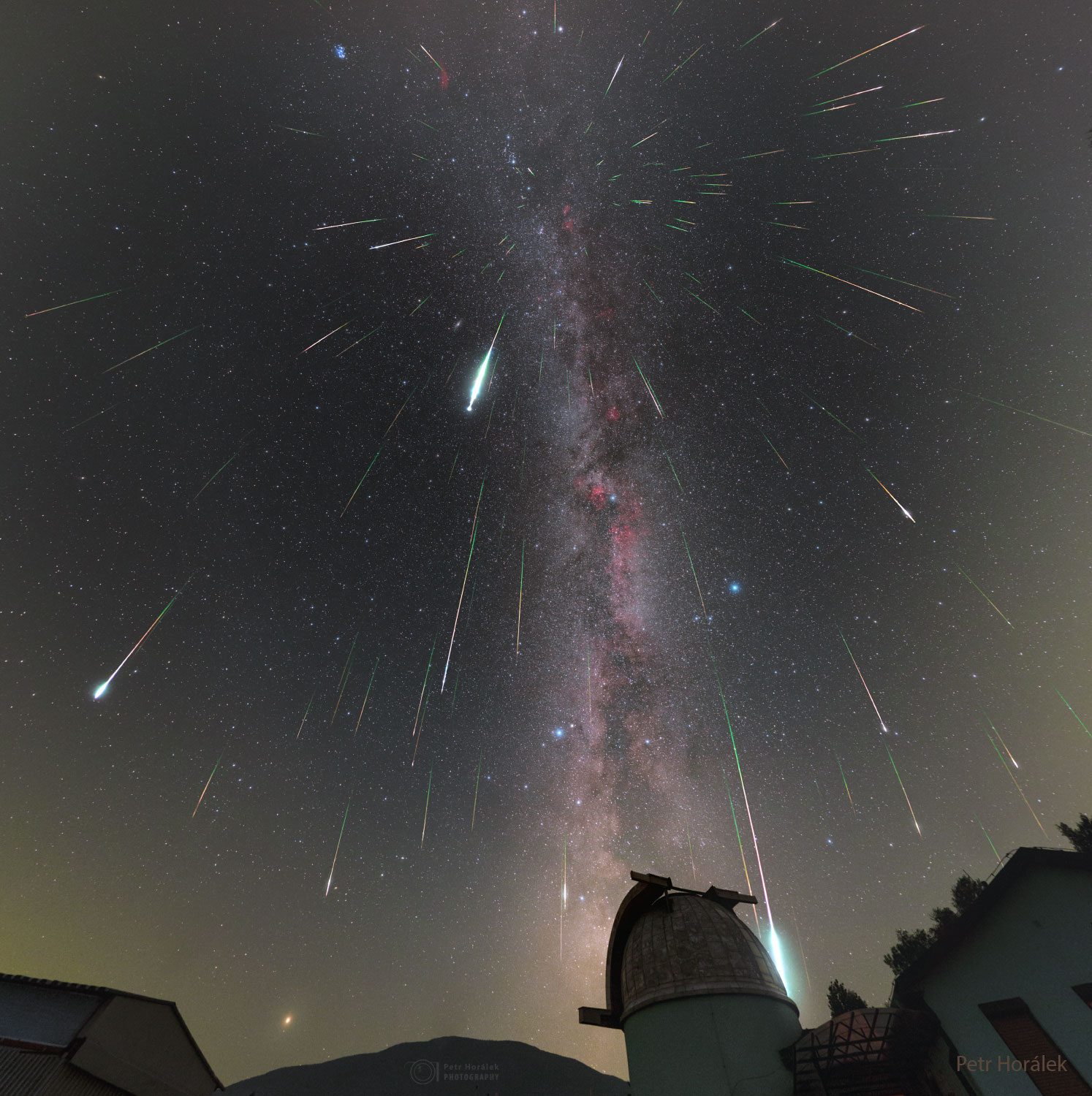APOD on Nostr: **Astronomy Picture of the Day** 09 August 2023 **Meteor Shower: Perseids from ...
**Astronomy Picture of the Day**
09 August 2023
**Meteor Shower: Perseids from Perseus**

Image Credit & Copyright:
Petr Horálek /
Institute of Physics in Opava
This is a good week to see meteors. Comet dust will rain down on planet Earth, streaking through dark skies during peak nights of the annual Perseid Meteor Shower. The featured composite image was taken during the 2018 Perseids from the Poloniny Dark Sky Park in Slovakia. The dome of the observatory in the foreground is on the grounds of Kolonica Observatory. Although the comet dust particles travel parallel to each other, the resulting shower meteors clearly seem to radiate from a single point on the sky in the eponymous constellation Perseus. The radiant effect is due to perspective, as the parallel tracks appear to converge at a distance, like train tracks. The Perseid Meteor Shower is expected to reach its highest peak on Saturday after midnight. Since a crescent Moon will rise only very late that night, cloudless skies will be darker than usual, making a high number of faint meteors potentially visible this year.
#APOD #SpaceFacts #Astrotheory #SpaceTech #Galaxy
https://apod.nasa.gov/apod/ap230809.htmlPublished at
2023-08-09 04:05:51Event JSON
{
"id": "d5cad7d2b8501a8edc8d6d81b8dc4e40e738ed538f4c08c5041d62c8a4b02f33",
"pubkey": "e85ed75286cb77475776c1007df8c4ff1c9c68eff91c3627347b065c5bf4dc78",
"created_at": 1691553951,
"kind": 1,
"tags": [],
"content": "**Astronomy Picture of the Day**\n\n09 August 2023\n\n**Meteor Shower: Perseids from Perseus**\n\nhttps://apod.nasa.gov/apod/image/2308/Perseids18_Horalek_1494.jpg\n\nImage Credit \u0026 Copyright: \nPetr Horálek /\nInstitute of Physics in Opava\n\n\nThis is a good week to see meteors. Comet dust will rain down on planet Earth, streaking through dark skies during peak nights of the annual Perseid Meteor Shower. The featured composite image was taken during the 2018 Perseids from the Poloniny Dark Sky Park in Slovakia. The dome of the observatory in the foreground is on the grounds of Kolonica Observatory. Although the comet dust particles travel parallel to each other, the resulting shower meteors clearly seem to radiate from a single point on the sky in the eponymous constellation Perseus. The radiant effect is due to perspective, as the parallel tracks appear to converge at a distance, like train tracks. The Perseid Meteor Shower is expected to reach its highest peak on Saturday after midnight. Since a crescent Moon will rise only very late that night, cloudless skies will be darker than usual, making a high number of faint meteors potentially visible this year.\n\n#APOD #SpaceFacts #Astrotheory #SpaceTech #Galaxy\n\nhttps://apod.nasa.gov/apod/ap230809.html\n",
"sig": "7439e1ec9d9da2013639245fd13bd22a8ea63e019df82bbd29e0e3b07dc87ef4ee672862a6a2f0f7983e62c9ec80a9dff1c8f5eeb93c84aba90f692ee5ce7e88"
}

